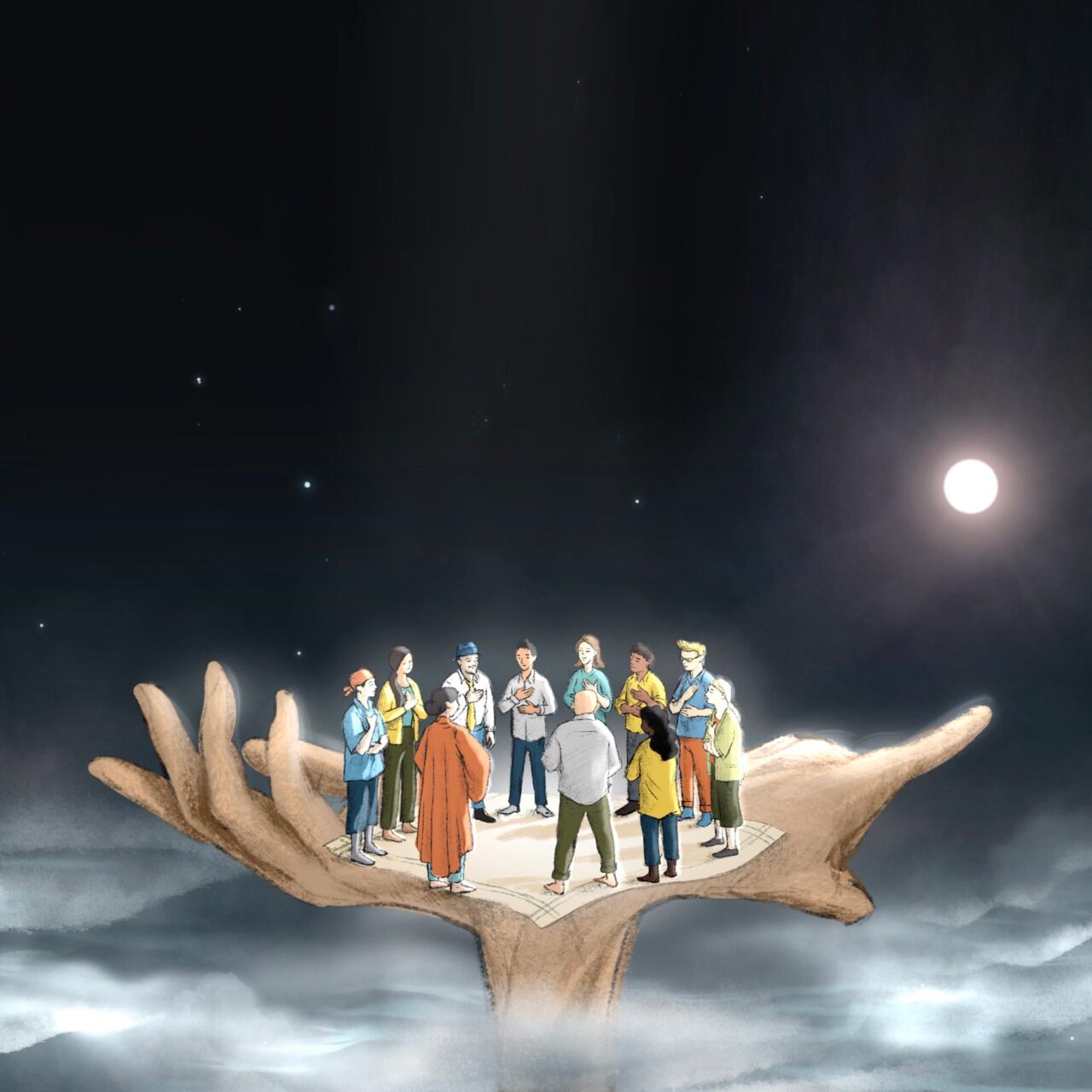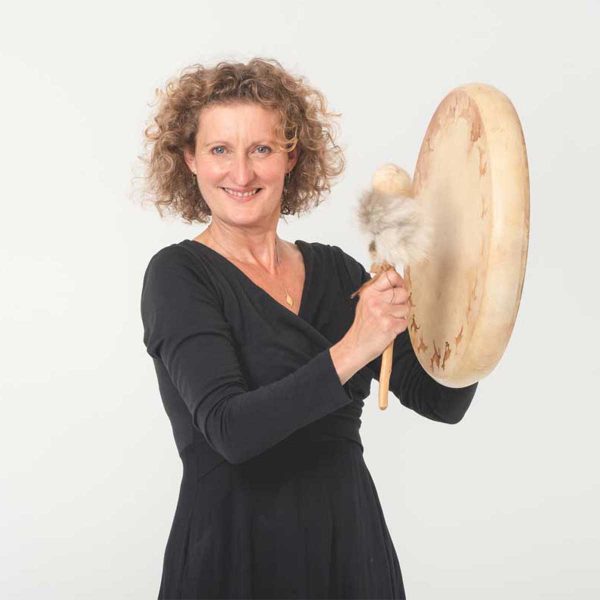
The Wounded Healer By Susannah Darling Khan
Thank you for all the feedback from the last article on the subject of being a woman shamanic practioner. It clearly touched something important for many of you.
I want to write just a little bit more (for now!) on this subject. Do you know the idea of the “wounded healer”? It’s an important concept for me and is inherent in shamanic practice and initiation. It’s the concept that your healing capacity comes from the wounds you have healed or are healing in yourself. It is from this intimate, first hand knowledge of the healing journey that your medicine comes. I find this important in several ways.
First of all, a little story. I was walking along the road last Sunday morning, on my way to teach the second day of “Power of the Heart” workshop in Amsterdam. I had my bags with me as I was leaving to come home after the workshop. I had been thinking about how feelings and our stories about life are so inter-woven, and how I wanted to attend to this in this workshop. I was taking myself as an example and looking into my old and well-known story of “I have to do it alone. There is not enough support”. I was recognising the story, and feeling the pain of it, on that balancing edge between feeling its impact, but not going full into it. I stayed there for a little, bearing witness to the soreness of this story without believing in the drama of it. Then, thought I, isn’t it time to call in a new story? (Again!). So I did: “I call in the knowledge, trust and experience that there IS support, I am not alone!” At that exact moment a voice called “Susannah!” I turned round to see Frank (the organiser of the workshop) in his car offering me a lift. We laughed and laughed at the joyous synergistic power of the moment. I got into the car and then got a text from Ya’Acov sending me love and inspiration and support for the day. It was a great beginning to the day to connect personally with the important of support, the power of our stories and the possibility of re-writing them. Those of you who were there will recognise how these themes wove through the workshop.
The wounded healer concept gives a dignifying framework through which we can acknowledge how many of our gifts and medicine potency have come through our own particular journey with suffering and the labour of healing. It’s also helped me understand different aspects of my own medicine. There are some places of the psyche’s wounding which I am very familiar with, and some places I am not. With those that I am not, I do not have the same instinctive grasp of the landscape and the work as I do with those disturbances of the psyche more familiar to me. With those that are more ‘foreign’, it is a different kind of journey, learning through observation and listening, and through being willing to “feel into” and to immerse myself in this other inner landscape enough to feel it from inside through the resonance of my heart. This depends on my own sense of knowing, but not being identified with my own “pain depths” and so being able to tune into someone else’s as a compassionate witness.
The Compassionate witness.
These are such easy words to say. What a huge meaning. I’m aware of how the word “compassion” as it is often used does not do justice to its real meaning. “Com-passion” literally means to “feel with” (from the Latin ‘com’ meaning ‘with’ and ‘passion’ meaning’ to feel’). So to be compassionate with the whole spectrum in others, we need to be able to “feel with” which means to be able to resonate with all the parts of our own emotional spectrum. So it is a deep work of radical inclusivity. And if we then add “witness” to make “compassionate witness” we have the capacity to resonate (and co-resonate) with the whole spectrum whilst not getting identified with it, remaining able to witness. This is a fine tuned consciousness to aspire to. It means developing a meta level of consciousness where one is aware of and able to witness one’s own consciousness without separating from it and without identifying with it.
Elemental connections.
And the elements. We dance with the elements a lot in Movement Medicine. This gives us so much, and hopefully means we enter in a relationship of reciprocity where we feel our love and responsibility to care for the elements, as, at the same time, we receive such healing and empowerment from and with them. Ultimately they become part of the healing dance of medicine which is constantly weaving through us. If we are connected with the spirit of the waters because we know and love the waters as and in ourselves, we can call this energy as part of our healing medicine. It comes because we are already connected in a relationship of mutuality and inter-wovenness. I am water, I know the dance of water as I know myself, so when I call the energy of water to help in something, it is there, as I am there. And the same for fire, for earth and for air. This is one reason why the elements are key parts of movement as medicine. When we each as dancers, discover and strengthen this relationship, we learn how we can offer this to our own psyches, we are empowering our own shamanic natures.
Primary and secondary emotions.
I said I would say something more about this. Here goes. I’ve found myself cautious to share this, as there is a risk of using this information to judge oneself or others with something like “oh, they were/I was just in a secondary emotion”. For reasons I will make clear, this is not only unhelpful and inappropriate, it misses the point.
When a primary emotion is being expressed, it is the expression of the basic emotion which is there in your being at that moment. No kinks or translations in the internal pipe line. It’s straightforward, simple and uncomplicated. Normally, others who witness your expression feel the feeling too. When a secondary emotion is expressed it is a different emotion from the one being felt in the base of your being. It normally doesn’t have the same effect in others, who can be confused by witnessing the expression of emotion but not feeling the response in themselves they would expect to have. They may wonder if they have become hard hearted, for instance. So what’s going on? If we were at home in the full spectrum of our hearts, and knew that each feeling was allowed, acceptable and simply part of our humanity, we’d be simply at home in the experience and flow of our primary emotions. However, we have all grown up and live in social conditions which for many of us outlaw certain feelings as socially unacceptable or “embarrassing”. A typical (but of course not always) example is the mix up between anger and sadness. Often when we women are angry, (primary emotion) we express sadness (secondary emotion). And often when men are sad (primary emotion) they express anger or irritation (secondary emotion). This is because, in many parts of society, it has been more acceptable for a woman to be sad than to be angry, and it has been more acceptable for a man to be angry than sad. It is as if the emotional energy, blocked from flowing down its “home channel” has to go somewhere and flows out through the most open door available in the psyche.
So, when we discover the possibility that we ourselves, or someone else, is expressing a secondary emotion (and we don’t absolutely know for anyone else than ourselves, as there are other things that can block the empathic resonance, including our own patterning) it’s a sensitive job for the compassionate witness and the wounded healer. Once again, when we know these inner twists and interruptions to the straightforwardness of our own healthy functioning, and know the fear and internal pressures which can be associated with them, we can support others in untwisting their emotional pipelines. The necessity is to have become at ease with one’s own emotional spectrum, so that (primary) feelings can be directly and simply acknowledged, and to know the internalised pressures which can distort them into secondary emotional experience. So, once again, we are talking about the medicine of the wounded healer.
And the benefit is huge. Secondary emotions lead to strange, complicated stories and mix-ups. Their expression does not bring relief, satisfaction and transformation in the way that expression of primary emotions does. Learning about this difference and the different quality of feeling has been very helpful to me, both with myself and with my relationship with Ya’Acov, my friends, and with my professional work. Again the key is knowing myself, the flavour when I am “off” when what I am expressing is not the base of that feeling, and being willing to take responsibility and make a new choice. Knowing what work it takes to do that, I can be respectful as others also struggle with this.
And once more, I think primarily for me, being a medicine woman is about trusting myself and that I have within me the capacity to call on what is needed to meet and respond to whatever it is that I am meeting. Even if my real response is “I don’t understand” or “I don’t know how to approach this”. Being with what is always seems to provide the doorway to the path.
I hope these thoughts are helpful! I’ve certainly learnt a lot, writing them down! Look forward to seeing some of you at my next open workshop, with Ya’Acov Dancing with the Heart of the World
Anyone interested in the Apprenticeship and training Movement Medicine path with myself and Ya’Acov can look at the information for the fourth apprenticeship programme which starts in Autumn 2016. The pre-requisites for this are: the Journey of Empowerment Ongoing Group starting in March, the Phoenix Retreat, and Initiation. All of these next year are at the Rill Centre in England. See our website calendar.
Love to us all!
Susannah



